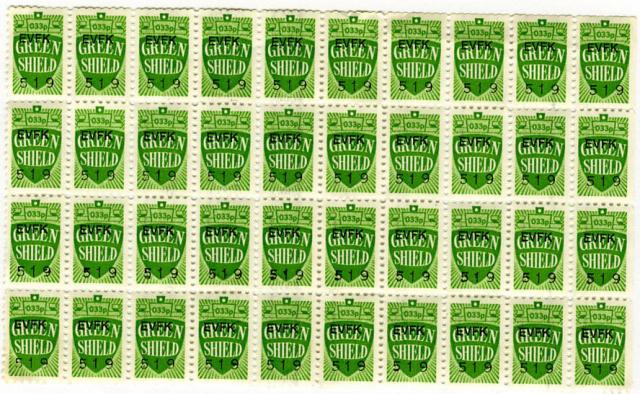
- Steve Stephens
- Platen Punisher
 Offline
Offline - From: San Francisco Bay Area, Calif.
- Registered: 13-3-2013
- Posts: 55
Re: Typeface database
beak wrote:
Steve Stephens wrote:
............. .....
Your sample shows two ways and I think both give the same result.Ah - no - this is my whole point; the top sample shows 12 characters contained within one inch, and the bottom shows 13 characters over a distance of one inch when they are measured centre (of letter) to centre.
Perhaps this answers itself IF there is no such thing as 13pt!
Both of your examples show 12 characters per inch. Top illustration is pretty clear. The bottom illustration shows 11 characters plus two HALF characters which comes out to 12 characters. Shift the one inch lines over to the left or right on either illustration and you'll have the identical view.
- beak
- Key Master
 Offline
Offline 
- From: Qld Australia
- Registered: 24-3-2013
- Posts: 929
Re: Typeface database
Right! Got it! I suppose, then, I should have said cpi; characters per inch.
Sincerely,
beak.
- •
- beak
- Key Master
 Offline
Offline 
- From: Qld Australia
- Registered: 24-3-2013
- Posts: 929
Re: Typeface database
Olymapia SM4 from 1960, 11 CPI.
Interesting that the zero is the letter O, and there are accents on a German-made typewriter, possibly to include the Swiss market. Olympia at this time seem to have made many different specialist type sets, such as those for mathematics/surveying, and with Greek letters for algebra.
Last edited by beak (08-6-2013 03:26:16)
Sincerely,
beak.
- •
- beak
- Key Master
 Offline
Offline 
- From: Qld Australia
- Registered: 24-3-2013
- Posts: 929
Re: Typeface database
Underwood 18 portable with cursive / script typeface.
Last edited by beak (19-12-2013 07:56:10)
Sincerely,
beak.
- •
- Uwe
- Moderator
 Offline
Offline 
- From: Toronto, Canada
- Registered: 12-3-2013
- Posts: 4,410
Re: Typeface database
Just a suggestion to anyone adding typeface examples here: make sure you type out the make/model in your post too! If you only include a photo of the typeface it will not turn up in a search.
I picked up a 1952 Hermes 2000 today, and although it looks very good, it does have a couple of small mechanical issues. It wasn't until I got it home and started typing out a few pages that I realised the keyboard had a couple of keys that you don't see very frequently (see below). I forgot to mention it in the type sample, but this 2000 has a 10-pitch typeface.
The pronoun I has always been capitalized in the English language for more than 700 years.
- beak
- Key Master
 Offline
Offline 
- From: Qld Australia
- Registered: 24-3-2013
- Posts: 929
Re: Typeface database
Alpina SK24. 10 characters per inch.
By the way, the accents are 'dead' keys; they do not advance the carriage when struck. This because another letter will almost always need to be typed in that same space, so the need to backspace is eliminated. One types the accent and then the letter to which it applies, and only then the carriage advances ready for the next letter.

Last edited by beak (08-4-2014 04:32:51)
Sincerely,
beak.
- •
- Uwe
- Moderator
 Offline
Offline 
- From: Toronto, Canada
- Registered: 12-3-2013
- Posts: 4,410
Re: Typeface database
1971 Imperial 220 (a.k.a. Royal Fleetwood) by Silver-Seiko
10 pitch - 44 keys - 86 characters
Made in Japan.
Based on its character set, I'd say this machine was originally sold in Great Britain and then eventually ended up in Canada. I think the portion of a stamp (food stamp?) I found inside the machine might have survived the journey from overseas.

EDIT: I was right about that stamp having come from England. Here's a quote I found on the internet concerning the one I found in this Imperial:
"Green Shield Stamps were a widely used sales promotion and loyalty scheme The stamps could be collected when puchases were made and exchanged for goods. Green Shield Trading Stamp Company was founded in 1958 by entrepreneur Richard Tompkins, and the stamps were withdrawn in 1991."
Last edited by Uwe (05-1-2014 18:09:40)
The pronoun I has always been capitalized in the English language for more than 700 years.
- beak
- Key Master
 Offline
Offline 
- From: Qld Australia
- Registered: 24-3-2013
- Posts: 929
Re: Typeface database
Smith-Corona Sterling USA 1945 to 1949
Sincerely,
beak.
- •
- beak
- Key Master
 Offline
Offline 
- From: Qld Australia
- Registered: 24-3-2013
- Posts: 929
Re: Typeface database
Sincerely,
beak.
- •
- beak
- Key Master
 Offline
Offline 
- From: Qld Australia
- Registered: 24-3-2013
- Posts: 929
Re: Typeface database
Very lucky today; An LC Smith & Corona Sterling (1939) with large typeface - 6 cpi. Have been wanting one for a while. So very generously, this machine was sent to me unrequested by a member of a fountain pen forum to which I also belong - sent express all the way from the States to Australia as a gift. Giver simply said that it was obvious that it should be with me rather than lying idle with him.
One evening's work has the carriage moving again, and type (huge type!) running across the page. Much more work to do, but it's coming right quickly so far.
PS This is a stock picture since mine is in pieces at present, but identical.
ETA This is 'Sight Saver no. 30' - see source below.
Last edited by beak (24-4-2014 06:13:24)
Sincerely,
beak.
- •



